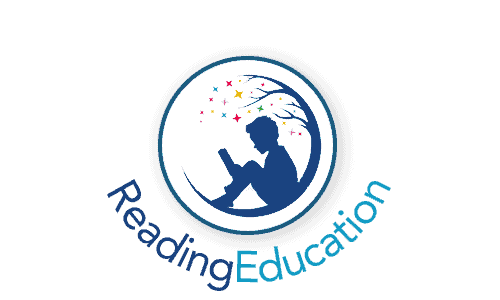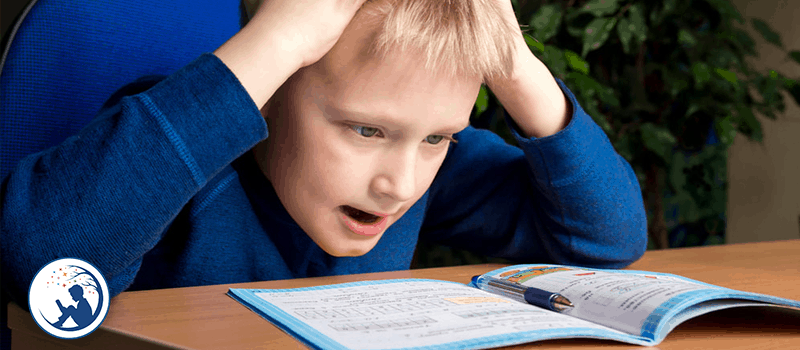Children with Attention Deficit Hyperactivity Disorder and other similar learning disabilities commonly struggle to develop strong reading comprehension skills, resulting in a lack of confidence when reading. If your little reader is having difficulty learning to read, today’s piece we’ll provide you with 11 actionable and easy-to-follow tidbits of advice that will help you to help your child become a better reader.
During first and second grade, the majority of children will develop reading skills to the point where they’re able to read. By the start of third grade, students will be expected to have the ability to read and further their reading development, by partaking in such tasks that involve them using books and/or the internet to find facts on a particular topic or understand the plot points in works of fiction, for example. The ability to pinpoint and extract meaning from books and other reading materials – and to do so independently – becomes progressively more important as each school year passes.
Reading comprehension relies on the capacity to rapidly sound out and recognise full words, a task that is often difficult for children with ADHD or other learning disabilities, such as dyspraxia and dyslexia. Even once of the fundamentals of reading have been grasped thoroughly, numerous children with ADHD experience problems understanding texts, building an understanding of the story, and associating what they’re reading to their current knowledge.
Thankfully, reading comprehension skills can be learnt. Here are even tips you can use to help your child boost their reading comprehension skills and, ultimately, learn to read as fluently as possible.
11 Tips For Children With ADHD Who Struggle To read

#1 – Read To and With Your Child
Reading to your child is the number one tip for all parents, regardless of what reading development stage, they’re currently at. Even if your child has the ability to read on their own without your help, there is a substantial amount of value to be gained from reading aloud to them. The listening skills children exhibit are commonly far more robust than their reading skills, so by reading a book aloud as your child reads along with you silently, you boost their level of comprehension and understanding of the text.
It’s best to start with small passages of text, gradually increasing the time spent reading if your child is able to maintain their focus. Audiobooks are an excellent choice if you’re unable to read to your child or you simply want to extend the amount of time they’re read aloud to.
#2 – Their Imagination is Key
Building reading skills isn’t just about reading; there are many other facets involved in the development process. Your child’s imagination plays a significant role in improving their reading comprehension. When your child is reading or being read to, encourage them to imagine what is happening in the story; ask them to create a movie in their mind. After every two or three pages, ask your little one to describe what they’ve read/heard.
#3 – Show How Books are Structured
Most learning books/textbooks are commonly laid out in a fashion that highlights and summarises the most important information. Show your little reader how focusing on graphs, charts, section headings, and captions can provide useful facts and information, in addition to helping to organise their thinking.
Where fiction is concerned, teach your child the five W’s:
Who are the main characters?
Where does the story take place?
When does the story take place?
Why do the characters act in the way they do?
What conflicts do the characters face?
#4 – Predictions
When reading a story to or with your child, occasionally stop reading and them what they think might happen next in the book. By doing this, you encourage your child to take what they have learnt about the characters and the plot and use that knowledge to predict what might occur in the following pages or even the rest of the book.
For example, if you’re reading The Lion, The Witch, and The Wardrobe, ask your child what they think might happen when Peter, Edmund, Susan, and Lucy meet Aslan for the first time or what might happen when Aslan and The White Witch first encounter each other. Your child will learn to use what they’ve learnt and apply it to the story, which is a critical component of reading comprehension. It doesn’t matter if their prediction is right or wrong; all that matters is that they’re paying attention to what is happening and allows you to gauge their current level of comprehension.
#5 – Show Interest
Showing an interest in your child’s reading choices is an excellent way to boost reading confidence. At the end of each chapter and book, ask questions such as: What was the story about? Who was their favourite character? Did they enjoy the book? If so, why; in not, why not? Did the book remind them of any other books they’ve read or any real-life experiences they’ve had?
If it was a non-fiction book or a textbook, ask them what they’ve learnt from it, and how they can use the acquired knowledge at school. Vocalising and verbalising what has been read really helps to reinforce understanding of the materials.
If your child struggles to provide a clear summary of what they have read, read the book yourself and discuss with them your favourite characters, parts of the story you enjoyed etc. Leading by example, will encourage a child to do the same.
#6 – Note-taking is Invaluable
Encourage your child to keep a notebook or index cards close by when reading, and to make a note of important information as they make their way through a book. Note-taking promotes reading comprehension by pushing the reader to make sense of what they’re reading. The notes are not only useful for this purpose but also as tools for studying for tests further down the line.
If your child owns the book in question (rather than loaning it from school or a library) allow them to make short notes in the book using a pencil. Always help them with this process the first few times as it can be challenging for children to know which points to jot down. Showing them how to pick out important facts will set them in good stead for future reading.
If your child learns more effectively and efficiently through visual processes, help them draw charts and diagrams with the names of the characters, the setting of the story, themes of the book, and things of this nature. Alternatively, show them how to create a mind map.
#7 – Word Power
As a general rule, the more expansive your child’s vocabulary, the more advanced their reading comprehension ability, which means they’ll less frequently ask for your help with the pronunciation and meaning of words. If your child is about to begin a story or textbook that is likely to contain words unfamiliar to them, sit down with them beforehand and look up potentially problematic words in the dictionary, proceeding to make notes for your child to refer to when reading.
#8 – Be Their ‘Translator’
As reading skills develop, books naturally become harder, at which point texts may contain figures of speech that may cause some confusion. Children with learning- or reading-based disorders can sometimes be too literal, so it’s essential to help them not only understand what a specific phrase means but also that figures of speech are common in books and that they must learn when to distinguish them from more literal expressions. To do this, create a list of sayings and figures of speech that your child can refer to if they’re stuck. Learning to recognise figures of speech can often be challenging for those with ADHD, so ensure you’re on hand to provide assistance if required.
#9 – Show Your Child How To Read Between The Lines
Alongside understanding figures of speech, learning to read between the lines is an essential component of building reading comprehension. To help your child grasp the concept of ‘reading between the lines’, read with them and point out specific sentences in which certain information is implied, and ask them to tell you what’s missing. For example, if the sentence reads, “Mark was pleased about winning the 100 metre dash at school sports day for the second time”, they should understand that Mark has won the race once before. Again, in children with ADHD and similar disorders, this can be a slow process, so it essential to be on hand when needed.
#10 – Expand Background Knowledge
It’s much easier for a child to understand specific subject matter if they have background knowledge of said topic. Therefore, it’s important to expand your child’s range of reading as much as you can. However, it is crucial to still focus on topics and subjects they have a particular interest in. Children are far more willing and motivated to learn if the books or reading materials are related to things they like. By doing this, you’ll not only gain their interest, but you’ll also help your child to apply their own knowledge and experiences in order to understand a book.
#11 – Create a Book Club
For children to want to learn to read, it must be fun; therefore, setting up a book club with your child’s friends (and their parents) is a perfect way to inject fun into the learning process. Not only that it, but it also helps them to build confidence by sharing their views in front of others and learn teamwork skills by creating stories together as a group.
How To Help a Child With ADHD Learn To Read: A Summary
On the face of it, teaching a child with ADHD to learn to read might seem a demanding and challenging task; however, in reality, it merely requires patience, perseverance, correct planning, and learning in a fashion that interest and motivates your child. When implementing the above strategies, it’s essential to find out which ones your child prefers and allow them to lead the way when it comes to learning and book choices…with a little nudge in the right direction from you, of course!

